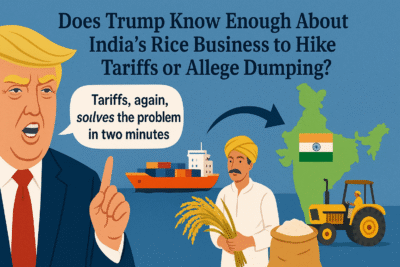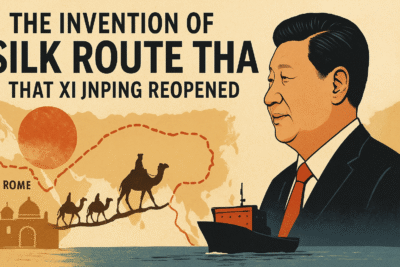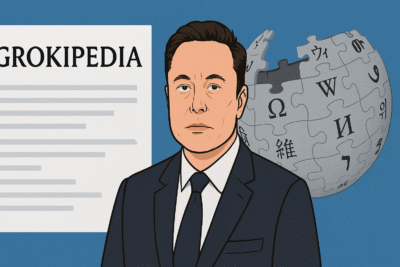
A graphical representation of islands in the sea (Photo generated by AI tools)
Nature brought everything, including humans and itself, that we see around us. Each one of these organic and inorganic things is mutually dependent for their existence. The climate is part of the nature. It shaped all living things and things living beings have produced, including the fiction of money.
It’s hard to imagine that money is not a real thing. It was invented as a notional concept because humans couldn’t barter mutually beneficial items any longer at a particular point in their civilisational journey.
Then money seemed to get on a path of its own independent journey. It became a security guarantee for the future which is always unknown. As the race intensified, money started to reshape the climate that once triggered its origin. The inflection point in money-climate story came at the industrial revolution in Europe that spilled over to Americas, Australia and then to Asia, particularly Japan, South East Asian nations, China, India and the rest.
The more money got into circulation the harder became it for the global climate to remain the way it did for eons. The climate started turning and twisting seeking a balance to stand on. Like everything else, the climate also craves balance stability, something like inertia defined by Isaac Newton in his first of the three laws of motion. We are right now caught somewhere in the middle of balance-seeking climate. The climate is changing, everywhere.
Something else also happened in this long money-climate journey. Money, the notional concept, became a possession. Individuals began accumulating it. Then corporate developed this fad. Now, they own the money that the earth generates. And now, the climate is threatening the corporate money. Bank is corporate. So, banks got into carbon-neutral funding. Carbon begets life. Life generates money. But the climate is now threatening money. The money now has to aid the climate regain, read go back to, the balance it had when money flowed to the corporate.
But a money-holder corporate honcho has become the most powerful decision-maker on the earth. Donald Trump, he is called. He has the backing of the man with the fatest chest for money. Elon Musk, a genius in his own right but like many geniuses, he is extremely, extremely eccecentric. And they don’t believe that the climate has lost its balance. They see more potential for making money, and hence greater control now over others, while the climate wobbles.
What can corporate bank do?
It’s following the traffic signal that Trump and Musk are giving out. It is recoiling. It is withdrawining from carbon-neutral funding. Because that is bad for making money over the next few years. We all know that banks keep and channel the money. If money is a river, banks shape the course of the stream. And it has decided to reverse the flow.
This is what Semafor wrote about the development. It should be an eye-opener for all of us. (Albert Einstein once said it is not society but individuals that change the course of history.) Read the following remarks by Semafor and give it a thought.
The recent mass exodus of banks from climate groups may be less of a setback than it seems. JPMorgan on Tuesday became the last of the six major US banks to bail out of the Net Zero Banking Alliance, a group that was formed in 2021 whose members committed to cutting emissions from their lending and investment portfolios. JPM didn’t offer a specific reason for leaving the group. But it’s safe to assume the defections are a response to a political climate increasingly hostile to anything that smacks of woke-ism on Wall Street. Still, it’s not clear a more meaningful retreat is underway. Apart from leaving the group, the banks didn’t announce any changes to their existing plans to increase investments in the energy transition and decarbonize parts of their portfolios.
That’s not to say that banks are perfectly aligned with an ideal climate future. But from its inception, NZBA was largely a marketing exercise. Members never planned to suddenly drop their fossil fuel clients. The group was never the malevolent anti-carbon cartel some Republicans made it out to be; neither was it a silver-bullet solution financing the energy transition. Banks exist to make money, and they serve the economy as it is, with limited powers to enact sweeping changes to other companies’ carbon footprints. NZBA was useful in helping banks coordinate on methods and standards for measuring and reporting their emissions. Now that most of them do that, the marketing upside of staying in the group may not be worth drawing the fire of anti-ESG crusaders.
The real test for banks is how much more capital they’re willing to put on the table for the transition, whether they brag about it or not. “While this exodus might not ultimately — and certainly not immediately — impact net financial flows to energy transition projects,” said Vanessa Fajans-Turner, executive director of Environmental Advocates NY, “it certainly doesn’t inspire confidence, or pave the way for them to materially grow.”




1 thought on “Climate change and a story of money as Trump and Musk dictate their course”